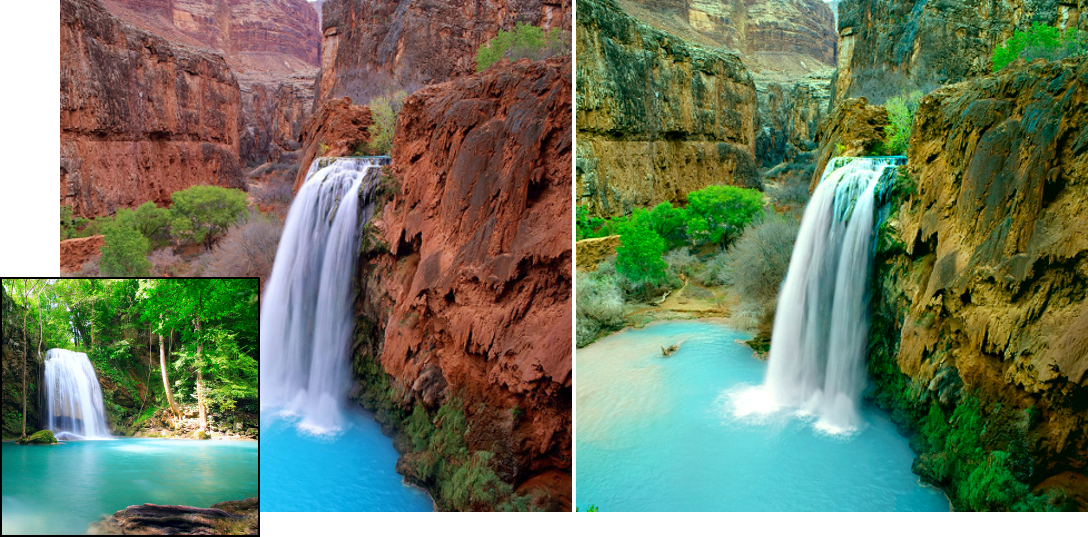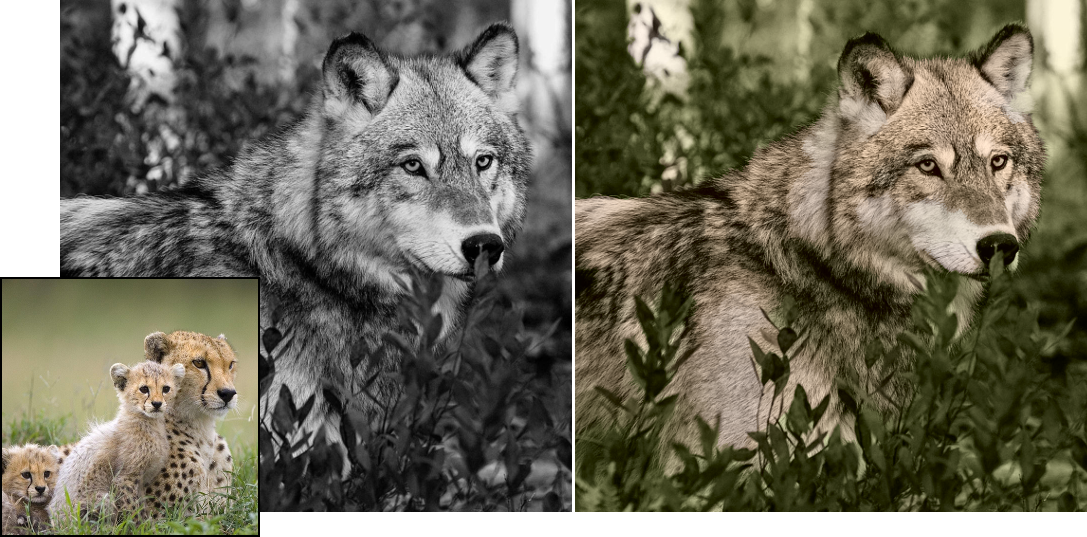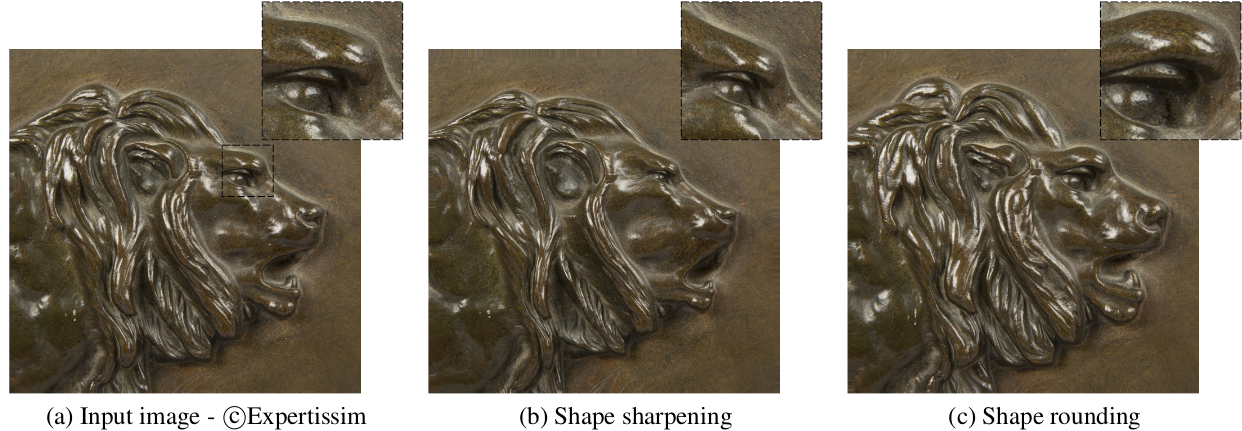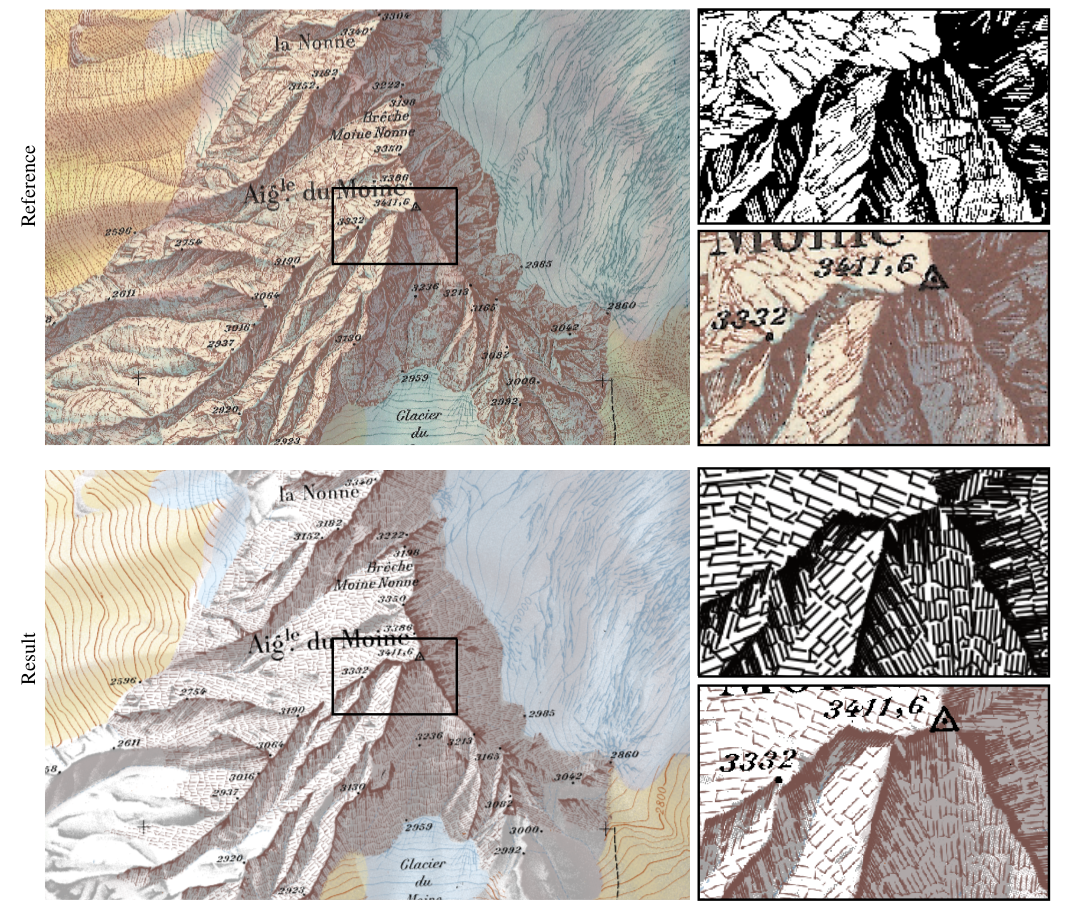Section: New Results
Computer-aided image manipulation
Automatic lighting design from photographic rules
Participants : Jérémy Wambecke, Romain Vergne, Georges-Pierre Bonneau, Joëlle Thollot.
|
Lighting design is crucial in 3D scenes modeling for its ability to provide cues to understand the objects shape. However a lot of time, skills, trials and errors are required to obtain a desired result. Existing automatic lighting methods for conveying the shape of 3D objects are based either on costly optimizations or on non-realistic shading effects. Also they do not take the material information into account. In this work, we propose a new method that automatically suggests a lighting setup to reveal the shape of a 3D model, taking into account its material and its geometric properties (see Figure 2). Our method is independent from the rendering algorithm. It is based on lighting rules extracted from photography books, applied through a fast and simple geometric analysis. We illustrate our algorithm on objects having different shapes and materials, and we show by both visual and metric evaluation that it is comparable to optimization methods in terms of lighting setups quality. Thanks to its genericity our algorithm could be integrated in any rendering pipeline to suggest appropriate lighting. It has been published in WICED'2016 [8].
Automatic Texture Guided Color Transfer and Colorization
Participants : Benoit Arbelot, Romain Vergne, Thomas Hurtut, Joëlle Thollot.
|
This work targets two related color manipulation problems: Color transfer for modifying an image colors and colorization for adding colors to a greyscale image. Automatic methods for these two applications propose to modify the input image using a reference that contains the desired colors. Previous approaches usually do not target both applications and suffer from two main limitations: possible misleading associations between input and reference regions and poor spatial coherence around image structures. In this work, we propose a unified framework that uses the textural content of the images to guide the color transfer and colorization (see Figure 3). Our method introduces an edge-aware texture descriptor based on region covariance, allowing for local color transformations. We show that our approach is able to produce results comparable or better than state-of-the-art methods in both applications. It has been published in Expressive'2016 [4] and an extended version has been submitted to C&G.
Flow-Guided Warping for Image-Based Shape Manipulation
Participants : Romain Vergne, Pascal Barla, Georges-Pierre Bonneau, Roland W. Fleming.
|
We present an interactive method that manipulates perceived object shape from a single input color image thanks to a warping technique implemented on the GPU. The key idea is to give the illusion of shape sharpening or rounding by exaggerating orientation patterns in the image that are strongly correlated to surface curvature. We build on a growing literature in both human and computer vision showing the importance of orientation patterns in the communication of shape, which we complement with mathematical relationships and a statistical image analysis revealing that structure tensors are indeed strongly correlated to surface shape features. We then rely on these correlations to introduce a flow-guided image warping algorithm, which in effect exaggerates orientation patterns involved in shape perception. We evaluate our technique by 1) comparing it to ground truth shape deformations, and 2) performing two perceptual experiments to assess its effects. Our algorithm produces convincing shape manipulation results on synthetic images and photographs, for various materials and lighting environments (see Figure 4). This work has been published in ACM TOG 2016 [3].
Local Shape Editing at the Compositing Stage
Participants : Carlos Jorge Zubiaga Peña, Gael Guennebaud, Romain Vergne, Pascal Barla.
|
Modern compositing software permit to linearly recombine different 3D rendered outputs (e.g., diffuse and reflection shading) in post-process, providing for simple but interactive appearance manipulations. Renderers also routinely provide auxiliary buffers (e.g., normals, positions) that may be used to add local light sources or depth-of-field effects at the compositing stage. These methods are attractive both in product design and movie production, as they allow designers and technical directors to test different ideas without having to re-render an entire 3D scene. We extend this approach to the editing of local shape: users modify the rendered normal buffer, and our system automatically modifies diffuse and reflection buffers to provide a plausible result (see Figure 5). Our method is based on the reconstruction of a pair of diffuse and reflection prefiltered environment maps for each distinct object/material appearing in the image. We seamlessly combine the reconstructed buffers in a recompositing pipeline that works in real-time on the GPU using arbitrarily modified normals. This work has been published in EGSR (EI & I) 2016 [13].
Map Style Formalization: Rendering Techniques Extension for Cartography
Participants : Hugo Loi, Benoit Arbelot, Romain Vergne, Joëlle Thollot.
|
Cartographic design requires controllable methods and tools to produce maps that are adapted to users' needs and preferences. The formalized rules and constraints for cartographic representation come mainly from the conceptual framework of graphic semiology. Most current Geographical Information Systems (GIS) rely on the Styled Layer Descriptor and Semiology Encoding (SLD/SE) specifications which provide an XML schema describing the styling rules to be applied on geographic data to draw a map. Although this formalism is relevant for most usages in cartography, it fails to describe complex cartographic and artistic styles. In order to overcome these limitations, we propose an extension of the existing SLD/SE specifications to manage extended map stylizations, by the means of controllable expressive methods. Inspired by artistic and cartographic sources (Cassini maps, mountain maps, artistic movements, etc.), we propose to integrate into our system three main expressive methods: linear stylization, patch-based region filling and vector texture generation. We demonstrate how our pipeline allows to personalize map rendering with expressive methods in several examples. This work is the result of the MAPSTYLE ANR and has been published at Expressive 20016 [5].








